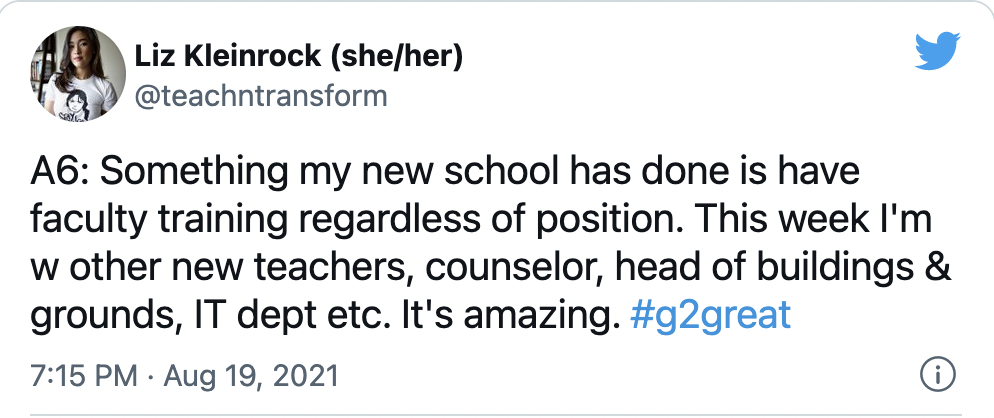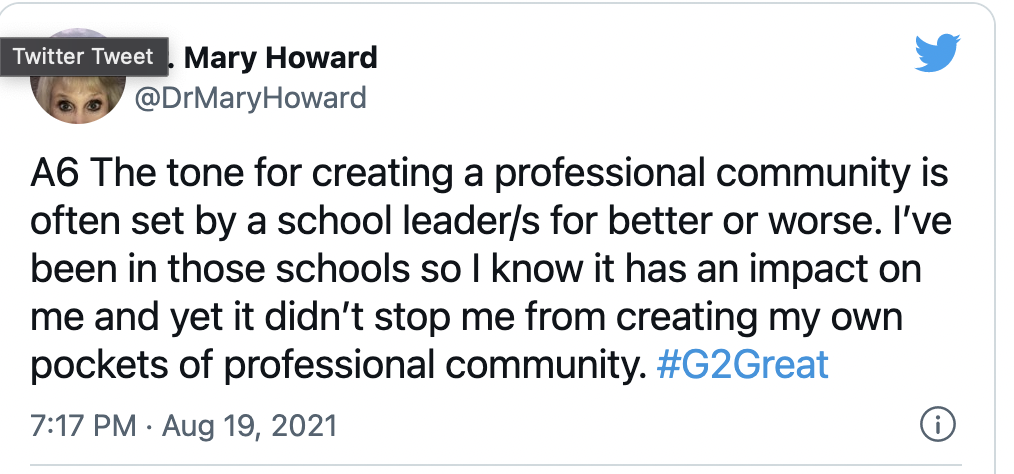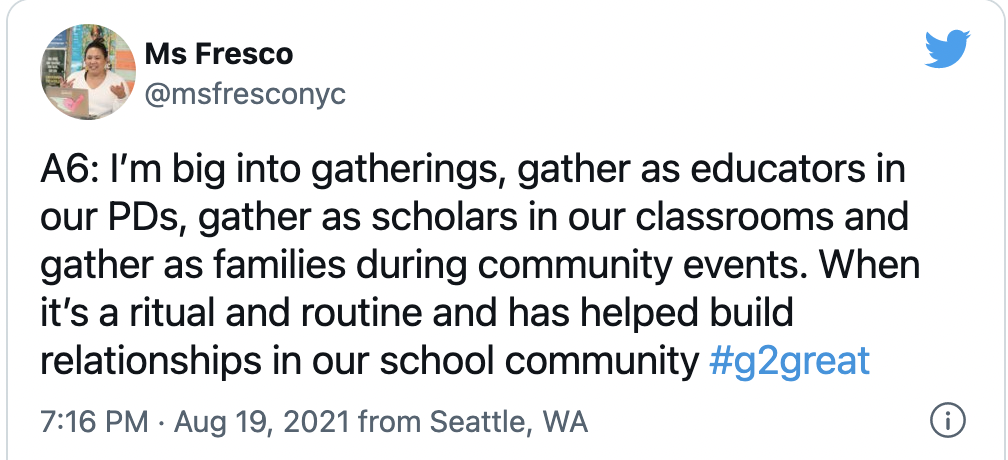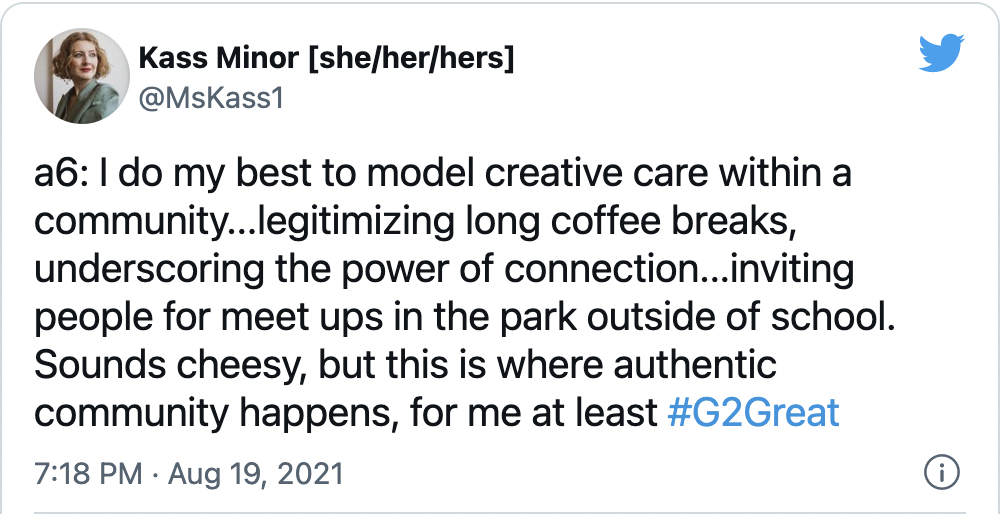By Brent Gilson

For a record of this amazing chat you can check out the Wakelet archive here
This week the #G2Great team had the honour of welcoming Liz Kleinrock (@teachandtransform on IG and @teachntransform on Twitter) to come and chat with us about her work and new book Start Here Start Now: A Guide to Antibias and Antiracist Work in Your School Community. It was a fantastic chat filled with a ton of great conversations around these important concepts. As I took time to look back over the chat the idea of the importance of two things really stood out to me as we consider teaching with an Antibias Antiracist lens. These concepts were recognizing and honouring identity and building a community. Before we dive in here are some words directly from Liz.
What motivated you to write this book? What impact did you hope that it would have in the professional world?
“There were a number of motivators for this book! The biggest one was connecting with teachers all over the world who were struggling to get started with shifting their classroom practice to center antibias and antiracism. I also noticed that there are many books and resources that exist in the theoretical space, but fail to connect with how the ideas show up in daily classroom practice. Teachers constantly hear what they’re not supposed to do, but need examples of concrete actions to try in the classroom.”
As we started the chat the first question really caused me to pause. How did that fit with my own teaching? I have made identity a real focus over the last few years. I remember being in an IREL session last year when either Dr. Sonja Cherry-Paul or Tricia Ebarvia mentioned that Identity needs to be more than a unit, it is more than a one and done. Identity is such an important part of who we are, who our students are, that we must give it the time it deserves.
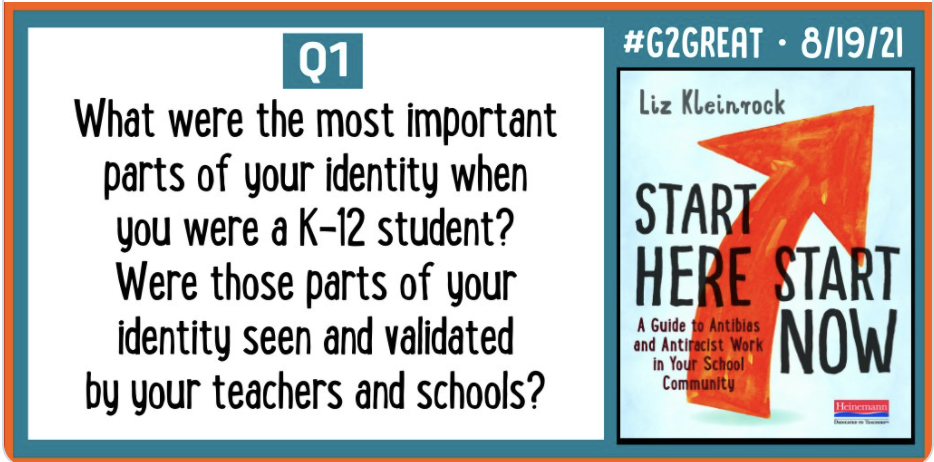
Looking back on my own years in school I don’t really recall ever being asked about my identity. I don’t recall doing any webs or sharing around what made us unique. This was not a unique experience I came to find out as answers to that first chat question rolled in.


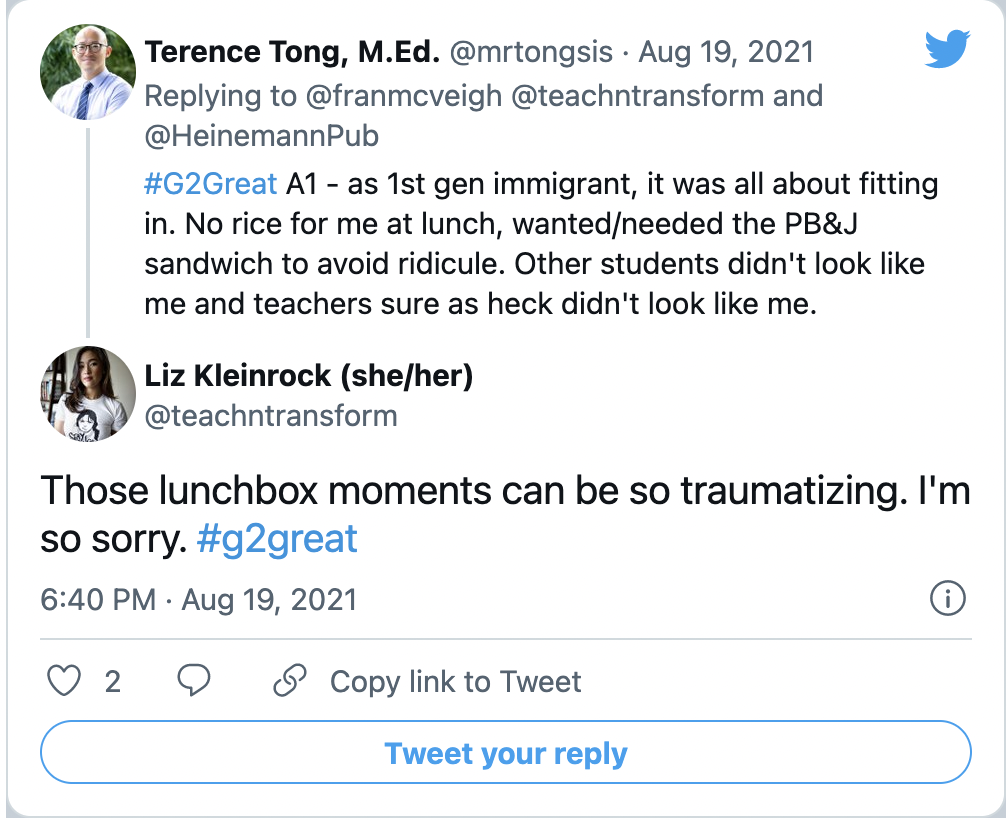
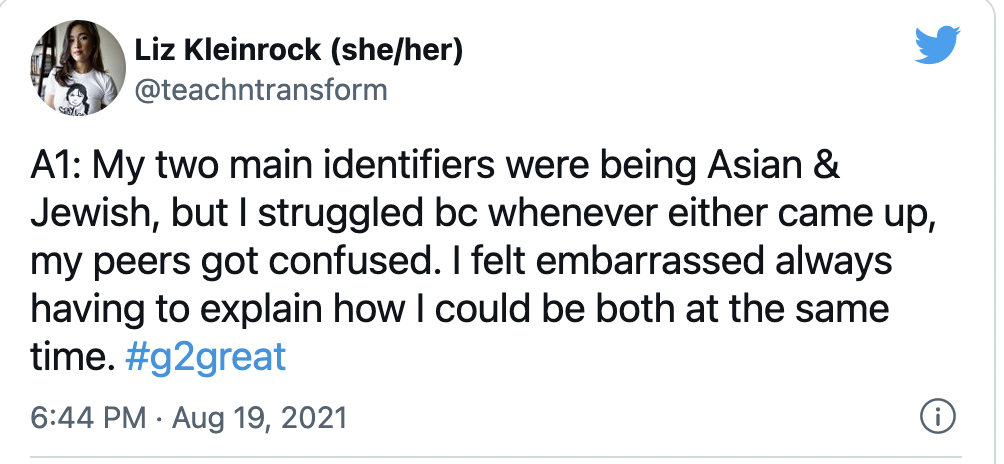
Other responses mentioned not fitting in because they were “band kids” or only the jocks were recognized because academic success was not seen as valuable. More reported just kind of existing, “no one really paid attention to me, I was quiet.” As I reflected more personally I remember how much my identity was tied to being my father’s son. And I was the kid who wore shorts in the winter. But as to my identity we did no work to address and honour that. Now I look at my classroom and the work I am doing and others do to honour identity and build community and I have hope that more students in more classrooms will be seen and honoured for what they bring to their individual communities.
As we do this work we often are prompted to look at our practices in the classroom. Which ones affirm and which ones erase?
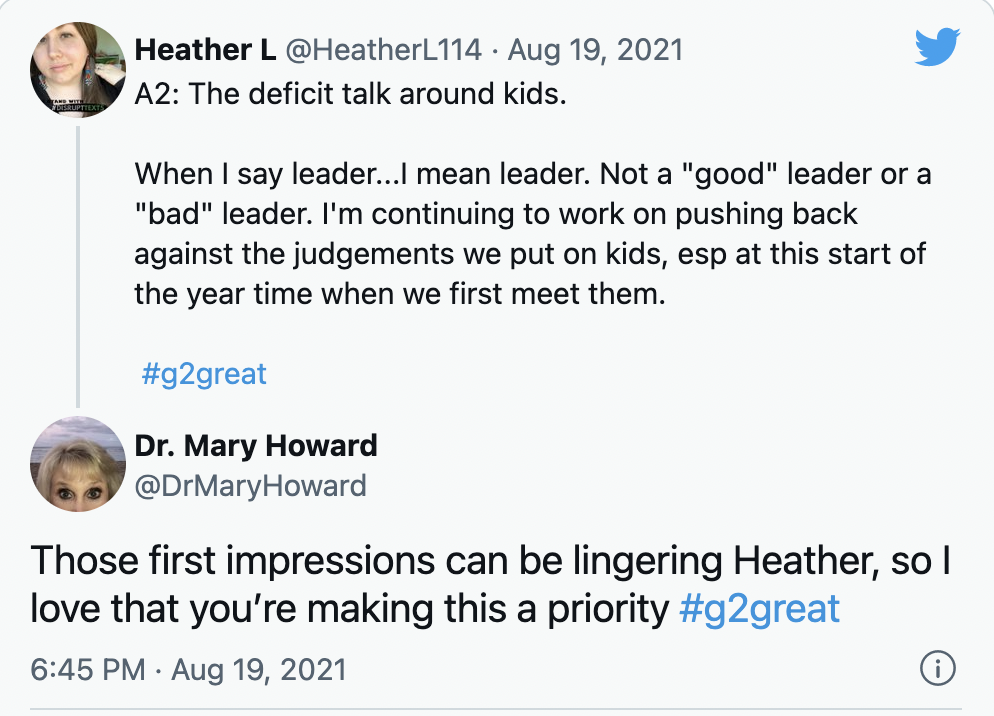

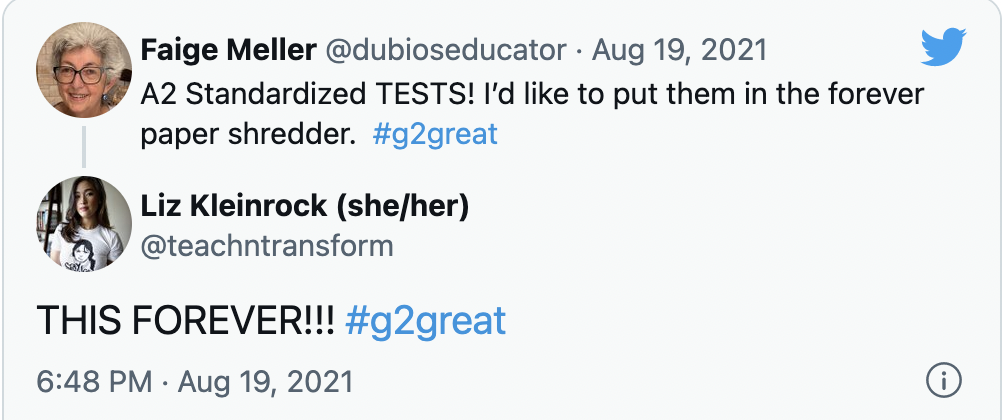

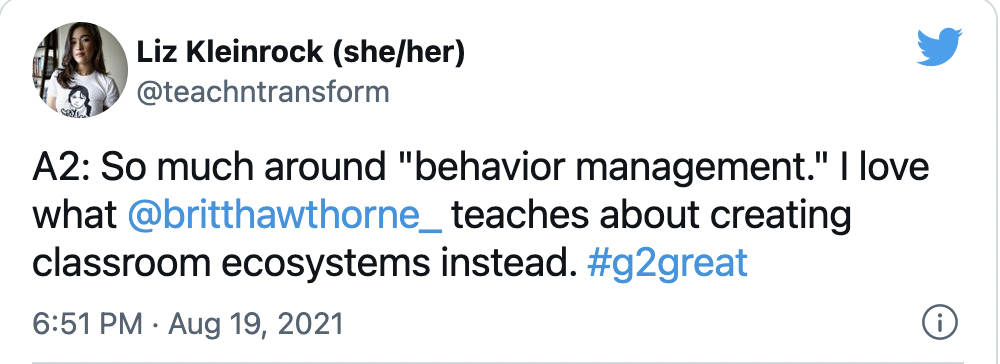
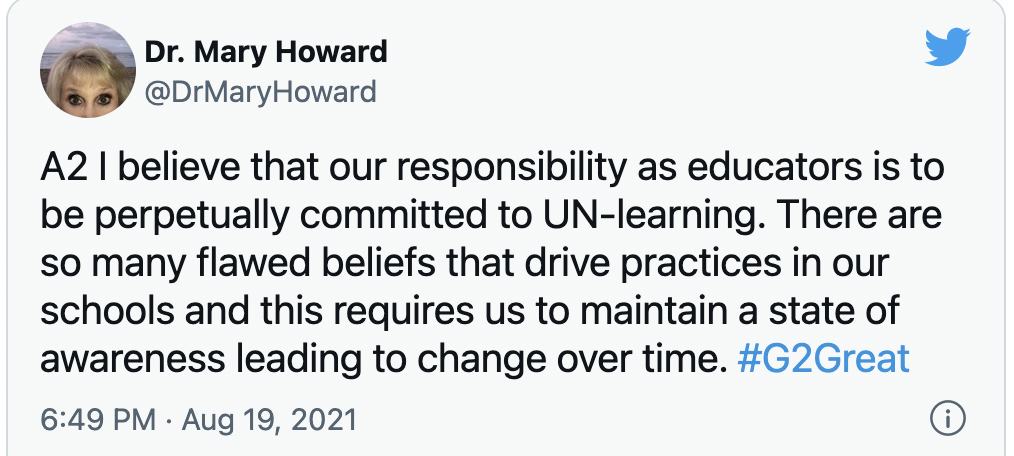
It can be uncomfortable to unlearn practices that are proven to harm and even halt student progress and our ability to form community. We need to embrace that discomfort. We cannot let discomfort allow us to ignore harmful practices. Taking steps to improve to better support our students is important and also can been seen as a task “too large”. Liz reflects on this in our prechat questions.
What are your BIG takeaways from your book that you hope teachers will embrace in their teaching practices?
- ABAR doesn’t have to be scary or overwhelming.
- Implementing an ABAR lens doesn’t mean you have to start from scratch.
- Students are ready and willing to do this work.
“Students are ready for this work”
Liz Kleinrock
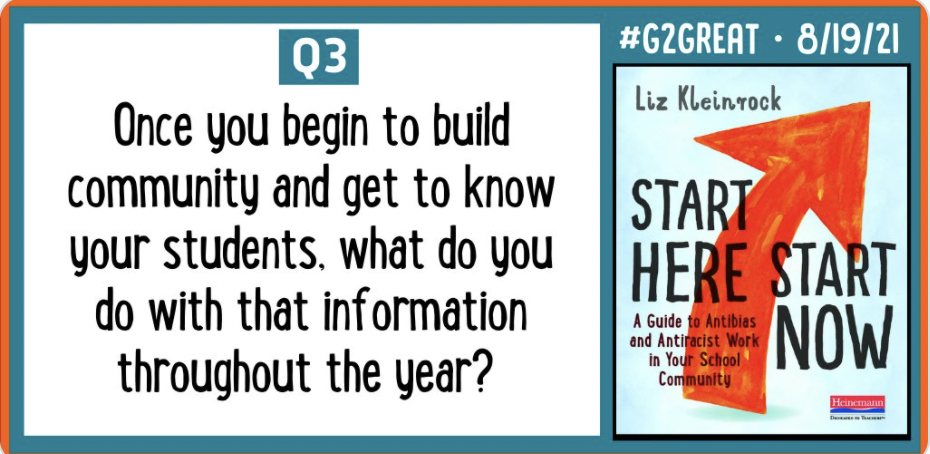
So we have started to build a community, now what? I think one of the great things about Start Here Start Now is that it is full of manageable steps and work that we can do at whatever point we are at in our ABAR journey as educators. Like the title suggests we just need to start. As teachers reflected on this question the focus around their students became clear.
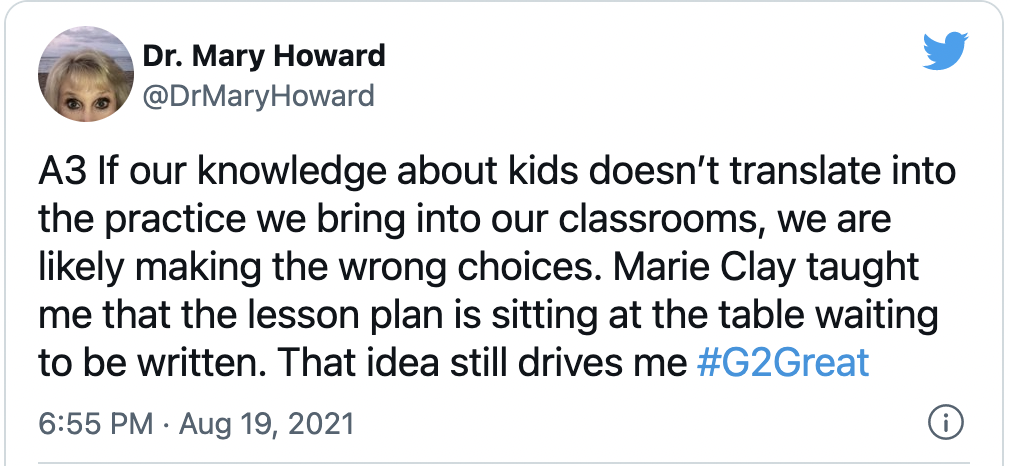
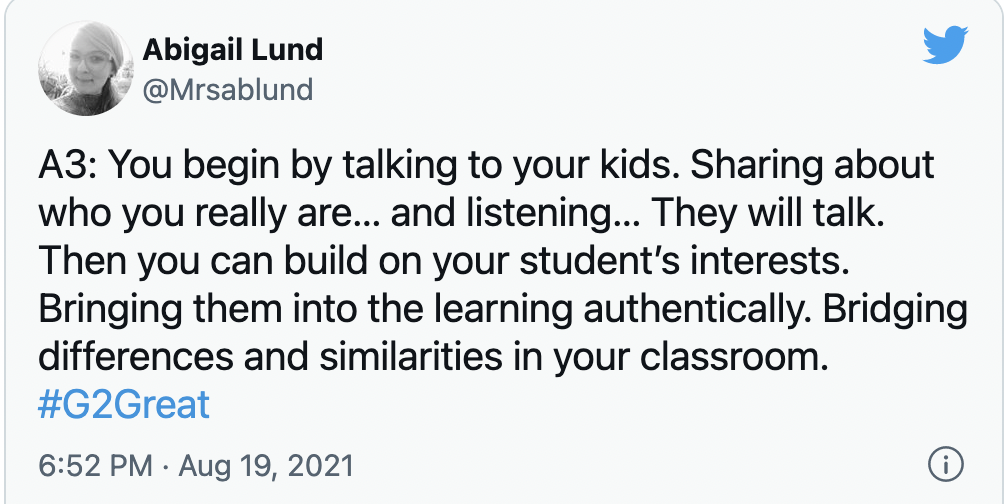
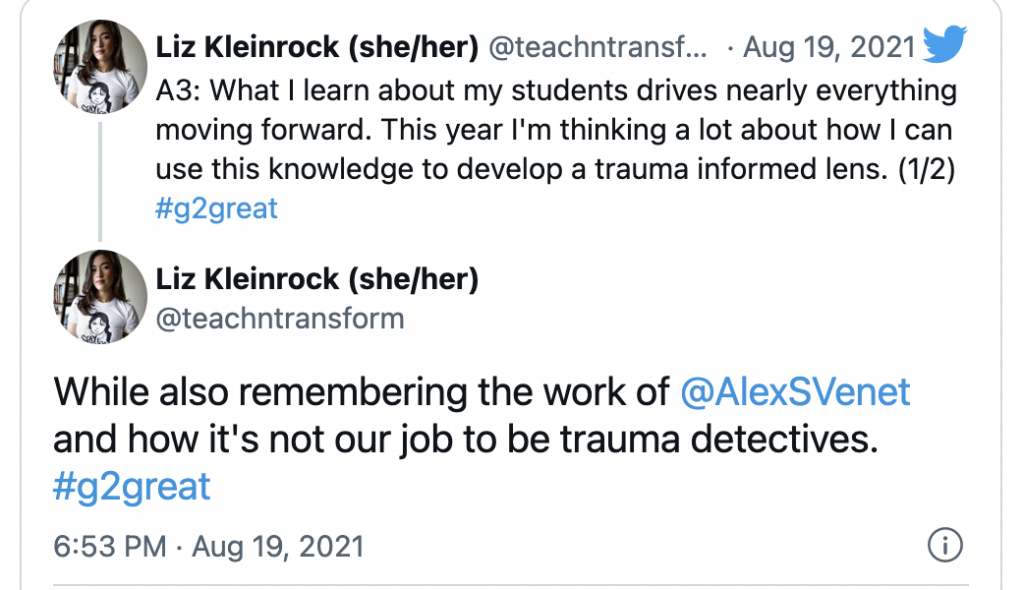
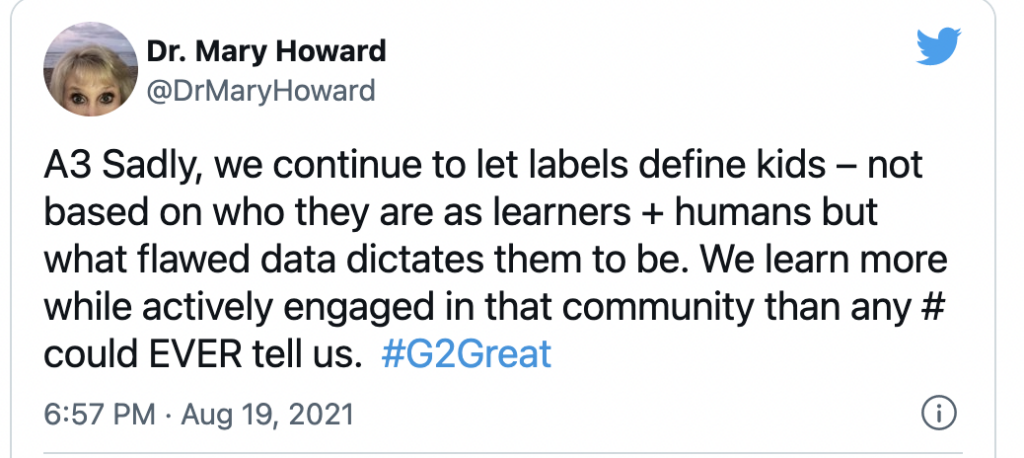
As teachers we advocate for all kids and doing so with both Antibias and Antiracist lenses we can also address the systems that so often tries to have all kids conform to one shared identity erasing their individual characteristics.
What is a message from the heart you would like for every teacher to keep in mind?
There is an access point for EVERYONE when it comes to antibias and antiracism work. The journey looks different for everyone. How this work will manifest itself in your classroom will and should look different from other classrooms, because you need to be responsive to the needs of YOUR students.
Again Liz brings us back to our focus needing to be our students. Start Here Start Now is a great place to… start. If you have already been doing Antiracist Antibiased work there is more to learn. If this work is new to you there are communities supporting each other in the learning. You must take the first step.
I often tie in my own thinking in the classroom to working out. When you add a new exercise it is often uncomfortable, you don’t always do it right and you might be a bit more sore than anticipated the next day. However, you keep it up and it becomes more familiar, you get better at it, and you become stronger. Too often when doing Antibias and Antiracist work teachers, especially white ones, struggle with the discomfort and the struggle proves to be too much. Don’t take the easy way out.
Start Here Start Now A Guide to Antibias and Antiracist Work in Your School Community provides the reader with the support to work through the discomfort. It includes strategies and tips to make this new work less intimidating.
As I wrap up I think back to the beginning of the chat as we discussed identity. Adults sharing how little of themselves was really present at school. I can’t help but think if our teachers really knew how little we felt seen they would be devastated. The world has changed since I was a kid but the problems of racism, bullying and indifference to the suffering of others still exists. Liz has provided us a place to start. A path to help us to better see our students as the whole humans they are and how to course correct when we or our students make mistakes.
I am so grateful that Liz brought this book into our professional libraries. As a team we are so grateful she joined us for the chat and we are grateful for the community of learners that join us each week. There is important work to do. Find people to support your learning. If you want to learn more from Liz and support her work please be sure to check out the links below.
Book: https://www.heinemann.com/products/e11864.aspx
IG: https://www.instagram.com/teachandtransform/
Website: https://www.teachandtransform.org
